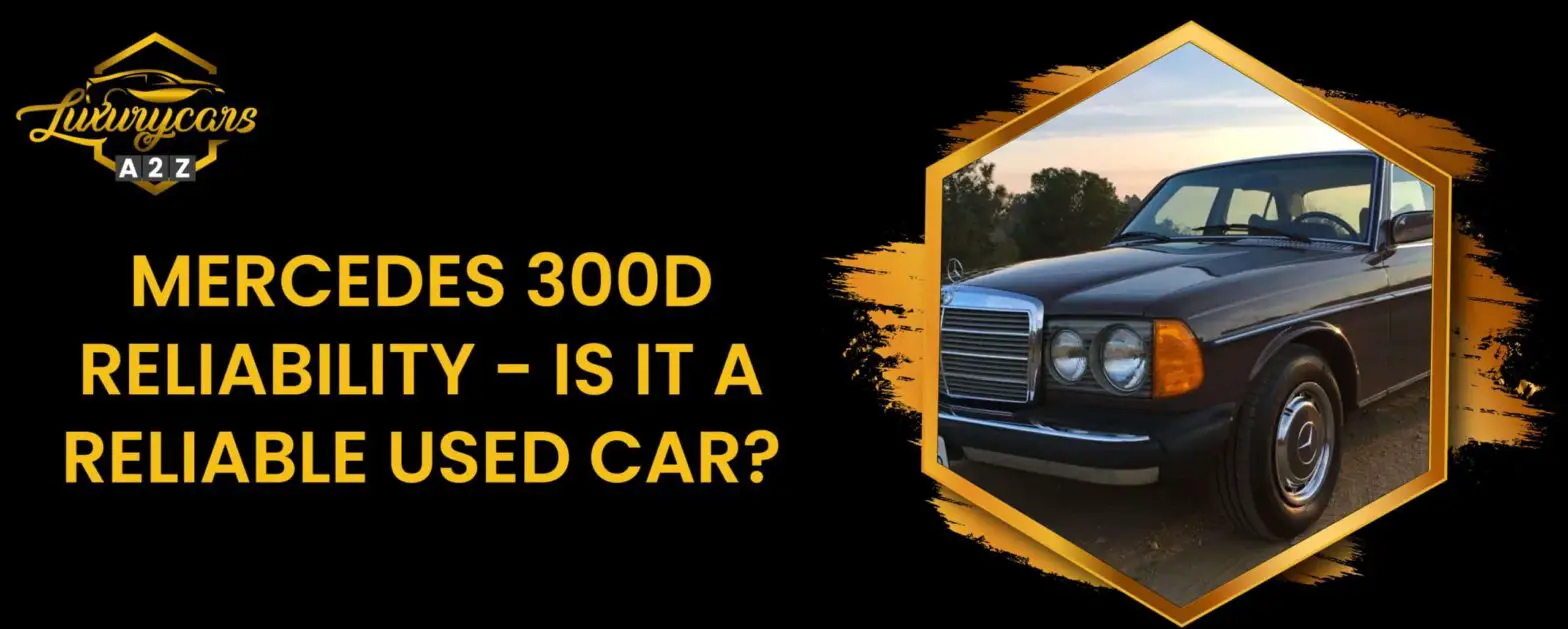The Mercedes 300D (W123) is a German sedan that was produced between 1976-1986, and since then this Merc has reached somewhat of a cult status. When it came out, the 300D was so popular that you had to wait almost a year before buying one.
As far as reliability is concerned, the W123 300D is able to accumulate tons of miles, and it is fairly bulletproof if maintained correctly. Most 300D models these days are neglected and a lot of them have been plagued by corrosion, but if you manage to find a decent example, reliability should not be a concern.
Mercedes 300D in the 70s and 80s
From the release of the 300D, Mercedes sold more than 2.7 million units before the production ended. The car was offered in the most common sedan variant, a coupe, and an estate. The sedan production ended in 1985, and the estate and coupe variants were produced until 1986.
Mercedes did it differently back in the day because most cars from this era made by Mercedes were known to be over-engineered, and built to last. Because of this, the 300D became a popular choice for many German taxis, and it was fairly common for these vehicles to reach 500k or even a million miles.
When this car came out, many people considered it to be the best car of all time. That’s because the design of this automobile was timeless. It is still considered an attractive looking sedan. On top of that, the car was truly bulletproof. The 300D could be used on paved or unpaved roads alike, offering incredible build quality.
Mercedes 300Ds are still around
These days, many W123 300Ds are still being driven around the world on a daily basis. After the production ceased in 1986, many of these cars were shipped to Africa, and are being used there to this very day. In Morrocco, for example, it was estimated that more than 50,000 of these cars were being used as taxis a few years ago.
300Ds run effortlessly, but often many of the car’s functions became a bit of a mess. Because of this and many other reasons, nowadays many of these cars are being neglected until they can’t run anymore.
The upside of the Mercedes 300D is that they are pretty well known, so working on these cars is rather easy for most veteran mechanics. These cars are slowly becoming classics and are starting to gather more and more attention. This is expected to change the attitude towards these cars when they do become scarcer.
’70’s and ’80s Mercedes vs. Modern-day Mercedes: Reliability
Mercedes cars from the ’70s and ’80s were built with a different purpose in mind. In those days, Mercedes was mostly focused on making cars that could withstand continuous battering and substandard maintenance and still be able to run flawlessly.
It was a different time, and Mercedes followed the “best at all costs” mentality, which over-engineered the cars to a degree that actually did not work in companies favor. Mercedes was later forced to change the approach towards a more profit-oriented way of production.
Because of this, many Mercedes models in the 90s and early 2000s were held back in the engineering department and as such, they received a backlash from many different car magazines and experts. The newer cars were simply no match to these older models because they were not able to reach such superior reliability results.
FAQ
Should I consider buying a 300D W123 Mercedes?
There are many of these still knocking around, and finding one in a decent condition isn’t impossible. As such, a 300D does seem like a tempting proposition and should be considered if you are in the market for a classic older car.
As far as mileage is concerned, 300Ds are not limited by mileage like modern Mercedes are. But, if you can, you should most definitely search for a car with lower mileage.
A 300D in decent condition could set you back around $15k. At that price, you will get an iconic part of Mercedes history which could only increase in value as time goes on.
Is the 300D designation only associated with the W123?
Throughout the years, the 300D designation was used for many different models from the ’70s up to the ’90s. And it was supposed to represent a 3-liter Mercedes diesel-powered engine.
But the W123 and the W124 were the most popular 300D powered models. Both of which shared a similar underpinning and most reliability records are more or less the same. Mercedes continued using the 300D designation in the E-class as the E300D until 1998.
How does the model designation work these days?
In the older days, the Mercedes model designation was tied to the type of powertrain offered in the specific model. For example, an E500 4 Matic was a 5.0-liter petrol powered four-wheel drive E-class.
By doing this, Mercedes managed to convey the message about different types of powertrains to the customers. However, as modern-day engines changed dramatically such designations are not true as they once were.
An E63 AMG was an E-class with a 6.2-liter V8 model by AMG. Nowadays, the E63 is offered with a 4.0-liter V8. The same is happening across the entire car industry. For example, Porsche has made a strong brand image for its 911 Turbo S as the top of the line 911 with a turbocharged engine.
And Porsche recently released the Taycan. The top-of-the-line Taycan is called the Taycan Turbo S. Such naming does not make any sense, since the Taycan Turbo S is an electric vehicle, and electric vehicles don’t have forced induction engines.
Because of this, many car companies are changing the naming structure of their models, and are tying them to other aspects rather than the powertrain. For example, Audi has changed its model designation to tie up with the output of specific engines, which makes more sense in the EV department.


